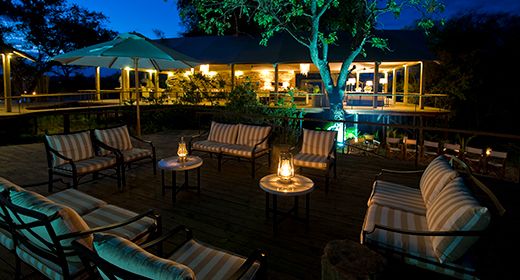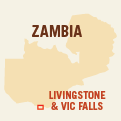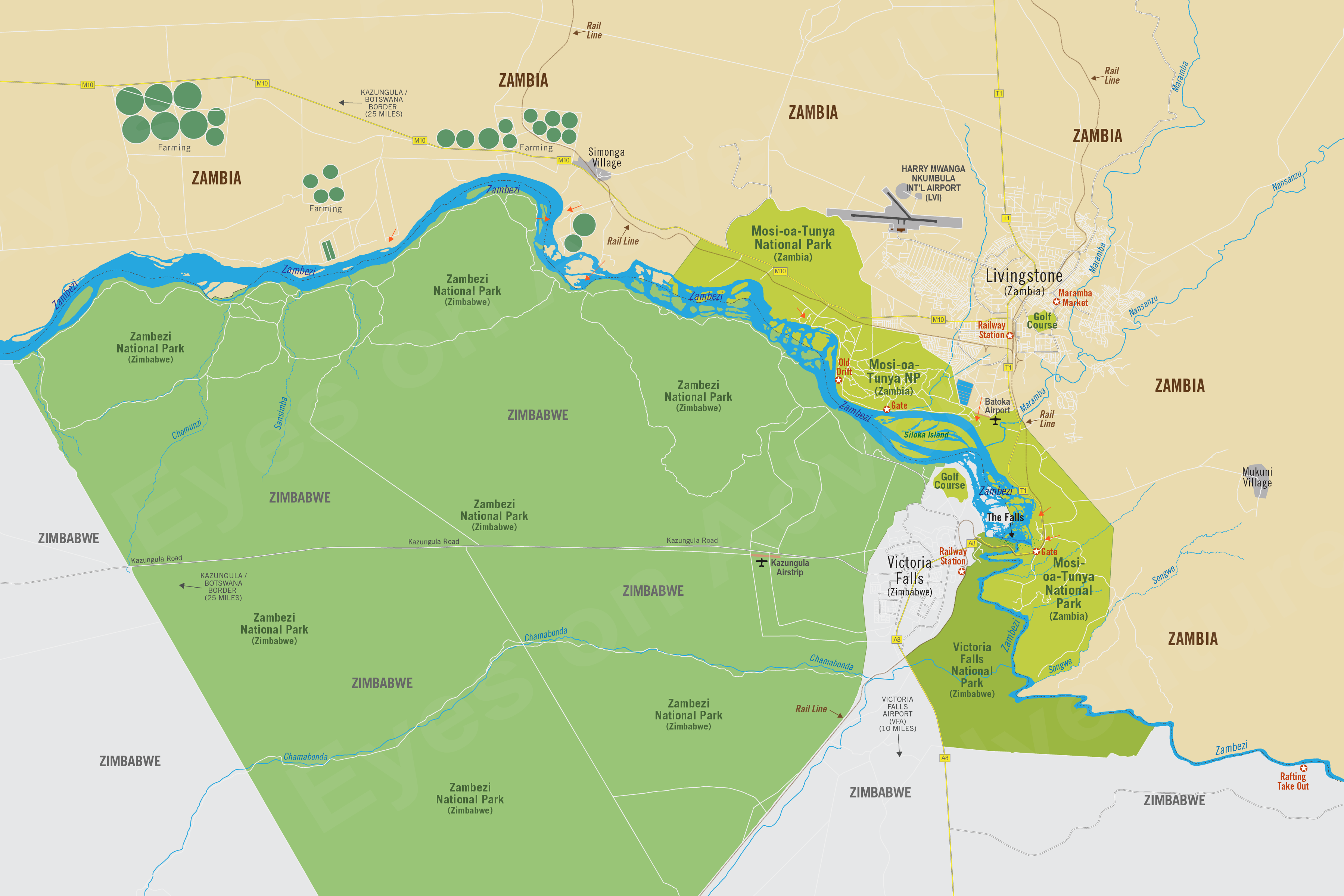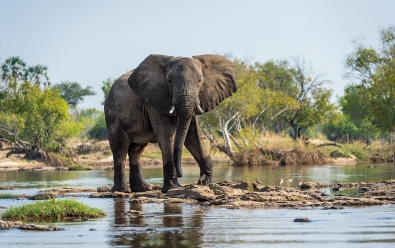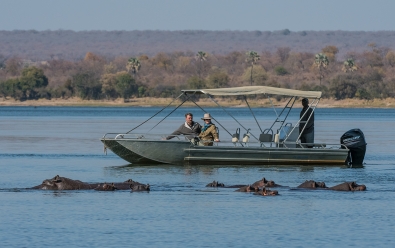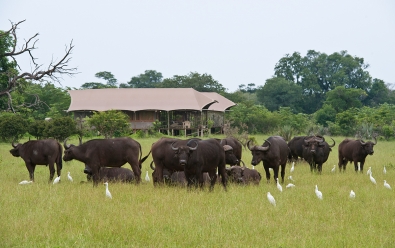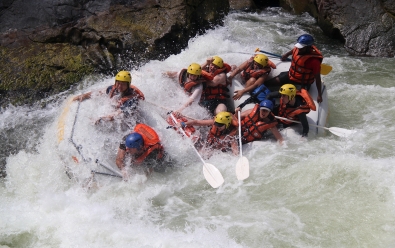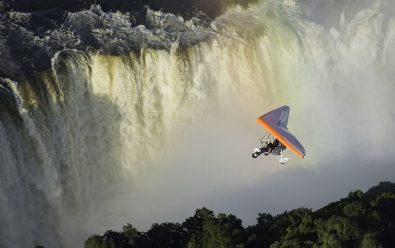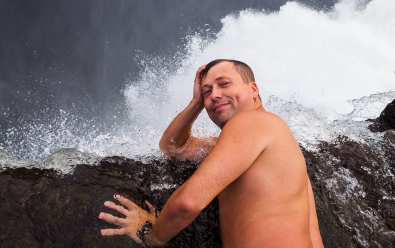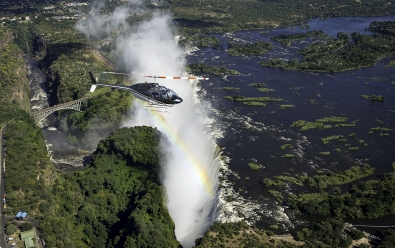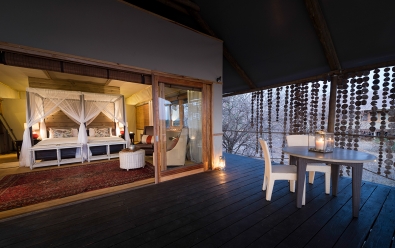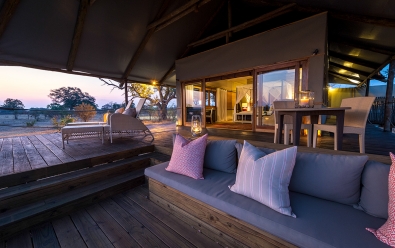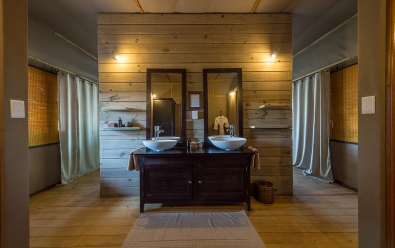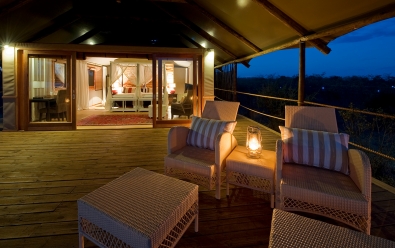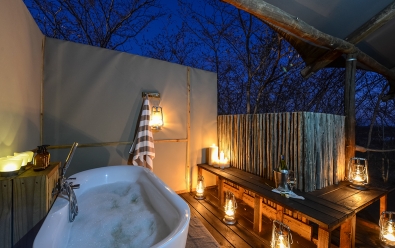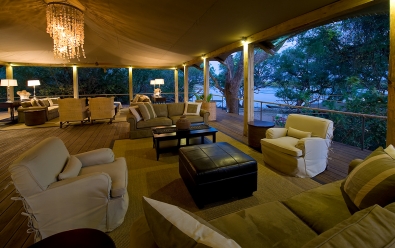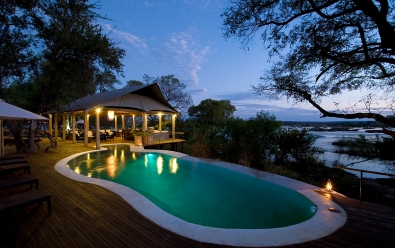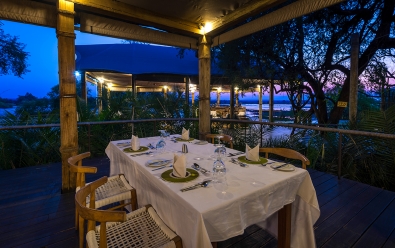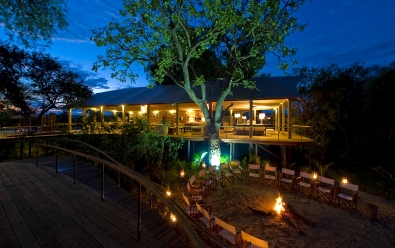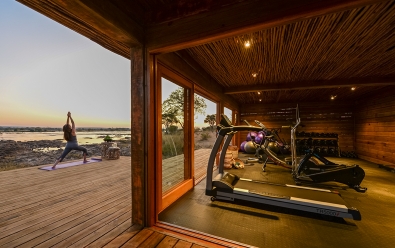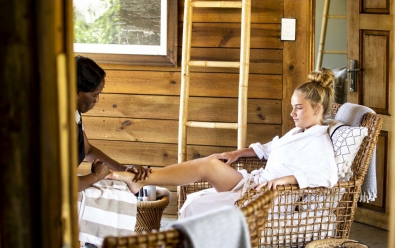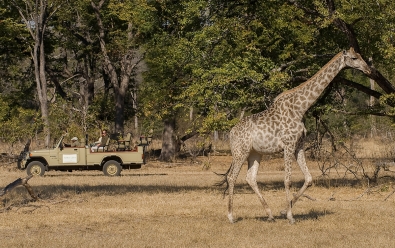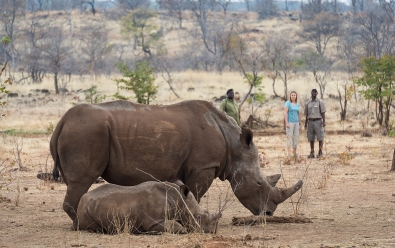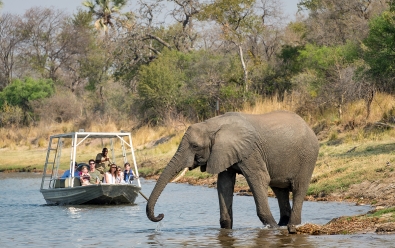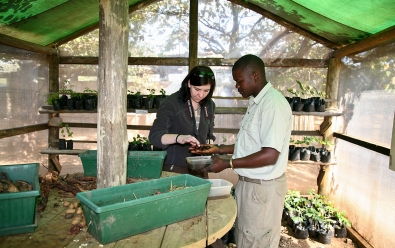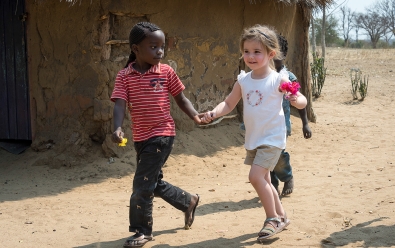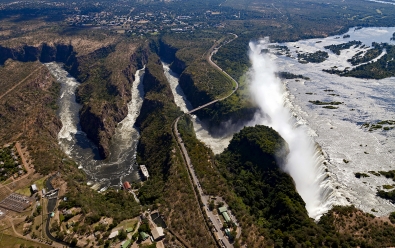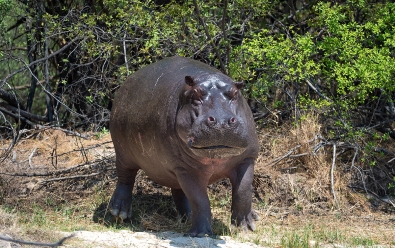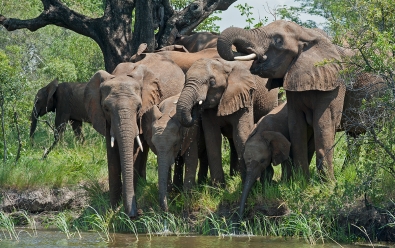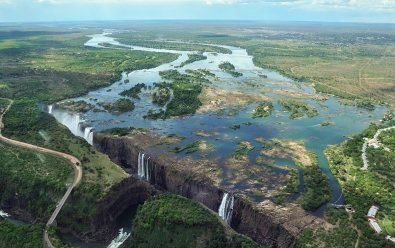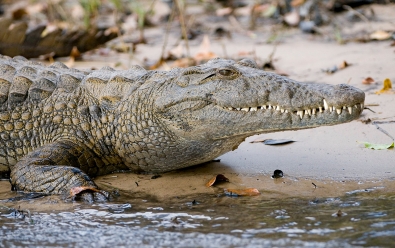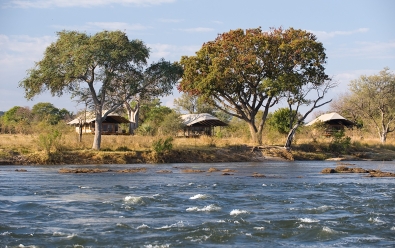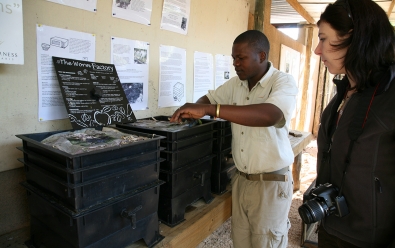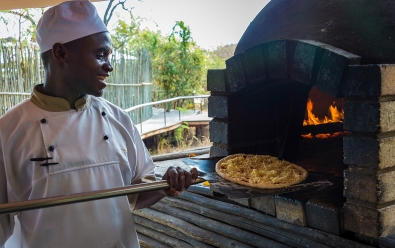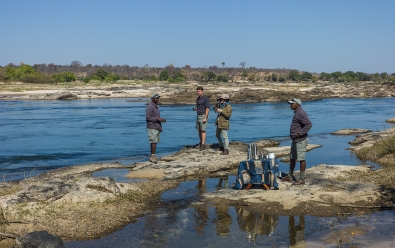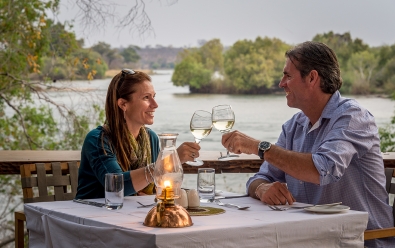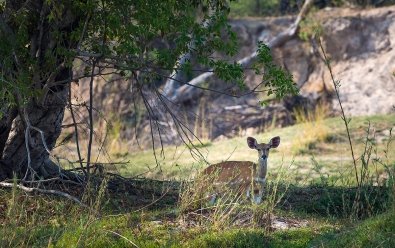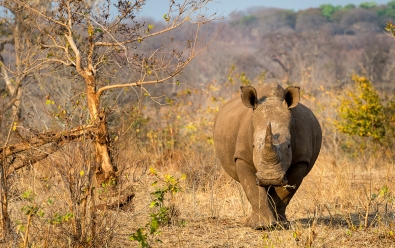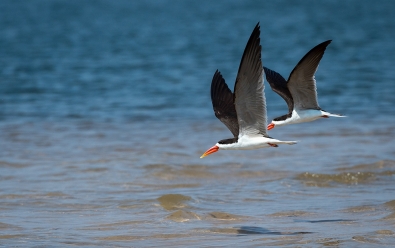Toka Leya Camp
Highlights
- Tour the incredible Victoria Falls.
- Tranquil setting on the Zambezi River close to The Falls.
- Safari in Mosi-oa-Tunya National Park.
- Enjoy adventure activities in and around The Falls.
Location
- Mosi-oa-Tunya National Park
- 7 miles from The Victoria Falls
- Southwest Zambia
Toka Leya Camp is located in Mosi-oa-Tunya National Park on the banks of the Zambezi River and just upstream from The Victoria Falls.
The camp is located on the Zambian side of the Zambezi River and offers the perfect locale for accessing The Victoria Falls, one of the natural wonders of the world and a must-see for visitors to Southern Africa. Activities from the camp include river cruises, game drives in the national park, guided walking tours of the waterfall, rhino tracking with a Park Ranger, fishing (catch-and-release), cultural tours and local school visits, and a tour of Livingstone town and its museum.
There seems no end to the variety of extra activities that guests can enjoy (booked separately and at extra cost) during their stay at Toka Leya. Some of the most popular activities include white-water rafting, the bungee jump from The Victoria Falls Bridge, helicopter and microlight flights above The Falls, sitting at the edge of the waterfall in 'Devil's Pool, canopy tours, the gorge swing, kayaking, and many others.
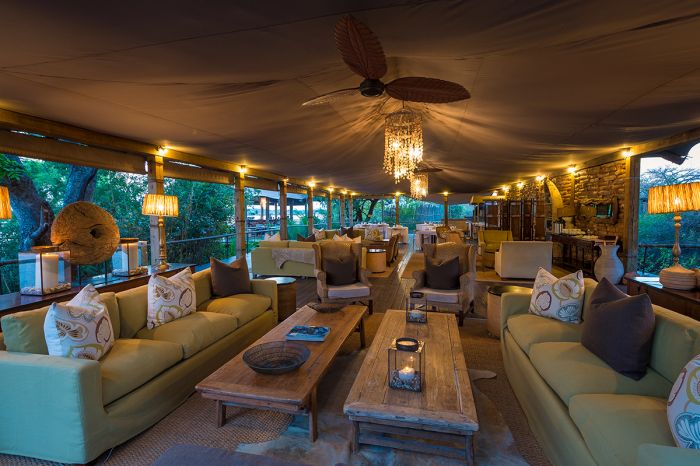
Main lounge area at Toka Leya.
Toka Leya has been involved in various eco-friendly initiatives since opening in 2008, including tree-planting, pioneering energy-saving projects and recycling efforts. The land around the camp was formerly badly degraded, but thanks to these initiatives, is now rehabilitated into a lush riparian woodland. Guests staying at the camp are invited to tour the Toka Leya's tree nursery and worm farm to learn and even participate in the initiatives.
Toka Leya offers 12 spacious tented guest rooms (3 of which are double/family units) in a tranquil setting on the northern bank of the Zambezi River. The guest tents are spread out along the river and views from the tents decks are magical. The camp's main areas include an extensive lounge, bar, and dining area on elevated wooden decking under canvas, all with views over the river and often of passing wildlife. The camp also offers treatments in its Health & Beauty Spa and a well-equipped gym.
The name 'Toka-Leya' is derived from the names of two tribes, the Batoka, a group of Tonga people who inhabit western plateau areas north of the Zambezi River, and the Baleya, a small group of Bantu people that live in and around Livingstone town.
Wilderness Safaris are one of Africa's leading safari operators and they strive to minimize energy consumption at all their camps. Toka Leya Camp is powered by the national grid with a diesel-powered generator used as a back-up. Strict eco-friendly environmental standards are maintained so that no harmful chemicals or waste is allowed to enter the pristine ecosystem of Zambezi River and Victoria Falls.
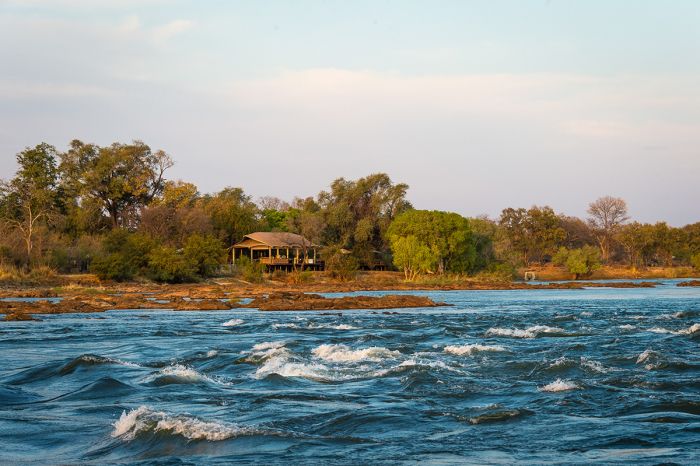
View of Toka Leya from the Zambezi River.
About The Victoria Falls
The legendary waterfall named for Queen Elizabeth and known locally as 'Mosi-oa'Tunya' (which means 'The Smoke that Thunders' in the Lozi language) is one of the great wonders of the natural world and one of Southern Africa's most visited attractions. Besides touring the waterfall (which is an amazing experience at either high water or low water), there are myriad adventure activities that can be enjoyed both above The Falls and in the gorges below.
The Victoria Falls are created by water in the Zambezi River, which originates far to the north in northern Zambia. Around 20 000 years ago, the river was redirected to its current course and it began cutting into fissures in the volcanic, basalt rock in this area and causing huge chunks of rock to crack off. Over time, deep gorges were created and The Falls have progressively moved upriver to the west, with a total of six individual gorges existing today. Collectively the gorges below The Falls are known as the Batoka Gorge.
At 5 604 feet (1 708 meters) wide and 354 feet (108 meters) high, the Victoria Falls forms the largest single curtain of falling water in the world, measuring 1.5 times the width of Niagara Falls and twice as high. In terms of combined height and width, only Brazil's Iguazu Falls is comparable.
The border between Zimbabwe and Zambia runs through the middle of the Zambezi River, both upstream and downstream of The Falls, so the river and waterfall are shared by both countries. In order to view both sides of The Falls, visitors must have a visa for both countries.
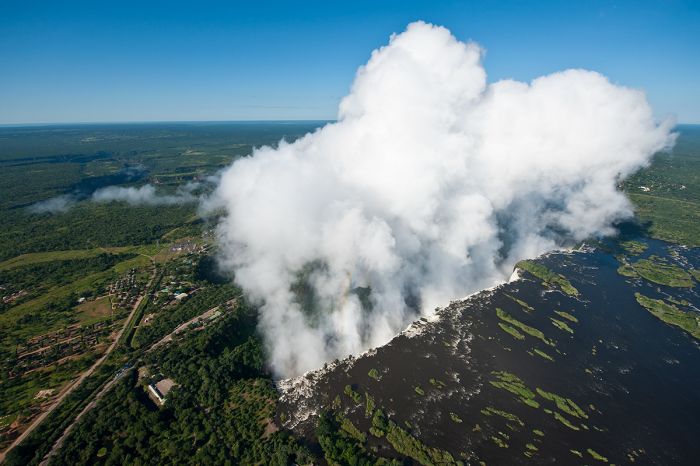
Aerial view above The Victoria Falls (Zambia at the bottom/left and Zimbabwe at the top/right).
Visitors planning to visit The Falls can choose from a multitude of accommodations on both the Zambian side and Zimbabwean side. The Victoria Falls Bridge, which was completed in 1905 and spans 2nd Gorge just below The Falls, connects the two countries via roadway and rail. The Falls can be viewed from either country (regardless of which side is used for accommodation) and many visitors obtain visas to allow viewing from both sides.
The small town of Victoria Falls (on the Zimbabwe side) was long the preferred base for visitors coming to The Falls, while Livingstone town in Zambia was largely overlooked. However, due to Zimbabwe's political tension and instability over the past 20-30 years, a good portion of the tourism has shifted to the Zambian side and today, guests stay about equally on both sides.
Mosi-oa-Tunya National Park
Mosi-oa-Tunya National Park covers 27 square miles (70 sq kms) and is divided into two sections: the wildlife section in the northwest between Livingstone town and the Zambezi River above The Falls, and the section beginning at The Falls and extending downstream to Songwe Gorge. There are separate gates for each section.
The park is home to elephant, buffalo, white rhino, giraffe, buffalo, zebra, blue wildebeest, bushbuck, and greater kudu. Birding in the park is very good, with over 250 species recorded. Hippos and crocodile are abundant along the river banks.
Activities at The Falls
The Victoria Falls region has become known as The Adventure Capital of Southern Africa and this is for very good reason: there are seemingly endless activities beyond just seeing the waterfall. Some of the most popular activities are discussed below.
White-water rafting
White-water rafting is perhaps the most popular of all the 'adrenaline' activities offered at The Falls. The gorges below The Victoria Falls offer some of the most spectacular rapids and scenery of any river in the world and rafting here is renowned amongst enthusiasts. The rapids here are mostly Class IV and V, but no prior experience is required as the rafts are steered by experienced guides.
During low water (usually August thru late December), rafting trips cover a long stretch of the river. The rapids at this time of year are at their most spectacular, with lots of white water, exposed rocks, high waves and pronounced troughs. This is the most desirable time to experience rafting on the Zambezi.
Rafting is also offered during high water (generally February to July), but the trips are shorter, starting just below Rapid #9 on both sides of the river. Rapid #9 is always a walk-around/portage, as it is too dangerous even during low water. Although high water rafting may seem less dramatic, as there is much less white water, it is actually much more dangerous due to the vicious undercurrents and whirlpools. When the water becomes very high (usually March thru May), all rafting is postponed.
More Adrenaline Activities
One of the most popular activities at The Falls is the hair-raising bungee jump off The Victoria Falls Bridge, where jumpers leap off a platform and free-fall 364 feet (111 meters) into the gorge with the Zambezi River water below. For thrill seekers, this is certainly one of the most intense activities at The Falls. Tandem jumps are also offered. Jumpers are winched back up after the jump. During the rainy season (Nov-May), there are interruptions in this activity, as the cords have to be dry.
From mid-August to late December (October/November is best), the low water levels at The Falls allow daring visitors to take part in a guided adrenaline activity, by swimming a short distance from Livingstone Island to the 'Devil's Pool'. Devil's Pool is a natural pool of water created by a depression in a rock wall along the lip of The Falls that limits the water flow enough for people to sit safely within. This amazing infinity pool is located right at the precipice of The Falls and one can peer over the edge and down the long drop into the gorge below.
For those wishing to see The Falls from above, there are several ways to get bird's-eye views. These flights are commonly called the 'Flight of Angels', after the famous quote by the explorer David Livingstone. Options include helicopter, microlight, and light fixed-wing aircraft.
Additional popular activities include canoeing on the upper Zambezi River, abseiling, canopy tours, gorge swinging, river boarding, kayaking, zip lining, the flying fox, jet boating, the bridge slide, and the bridge walk.
ROOMS INCLUDES & EXCLUDES CHILDREN FACILITIES ACTIVITIES
Accommodation
12 air-conditioned guest accommodations in total comprising:
- 6 twin-bedded luxury canvas tents, each with two three-quarter beds. Mattress converters are available that transform twin beds into a king-size bed (to be arranged prior to arrival).
- 3 double-bedded luxury canvas tents, each with a king-sized bed.
- 3 family units consisting of two bedrooms, each with two three-quarter beds. Bedrooms are separated by shared en-suite facilities. One shared bathroom with an indoor shower, outdoor shower, double-basin vanity, and separate toilet. There is one shared entrance, a shared indoor lounge area, and a shared outdoor deck with seating area.
Each luxury canvas-tented accommodation is constructed atop elevated wooden decking with views of the Zambezi River. En-suite facilities include an indoor shower, outdoor shower, a double-vanity basin, and separate toilet. Each unit also has a private outdoor sunken deck with comfortable seating.
The units are connected to the main camp area by elevated wooden walkways.
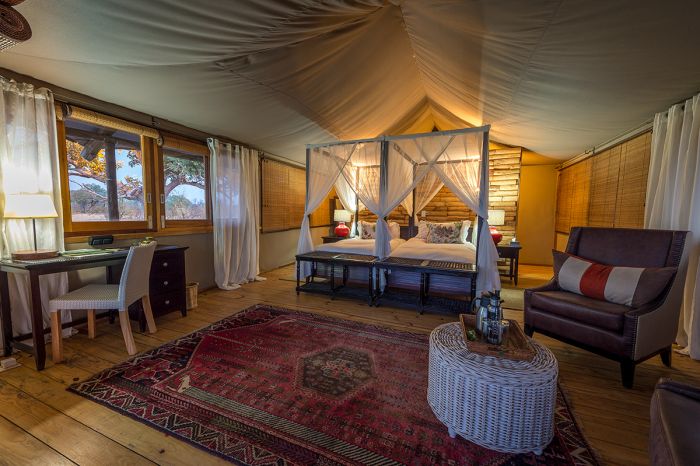
Guest tent interior at Toka Leya Camp.
Guest room amenities include easy chairs and an ottoman, a writing desk and chair, canvas blinds that roll up and down for all weather conditions, multi-plug charging facilities, an outdoor sunken lounge area, and mosquito netting for the beds.
Other items and features in the guest units include:
- Air conditioning.
- Luggage rack.
- Electronic safe.
- Mini-bar.
- Tea and coffee making facilities.
- Hairdryer.
- Pedestal fan.
- In-tent Wi-Fi.
- Personal amenities, including bathrobes, liquid soap, body wash, shampoo and conditioner, body lotion, room spray, insect repellent, mosquito coil, shower caps, vanity kit with cotton-tip swabs, cotton wool pads, garment washing powder (for underwear), sewing kit, tissue dispenser, laundry bag, and umbrella.
Toka Leya Camp can accommodate a maximum of 30 guests in total: 2 adults and 2 children in each of the 3 family rooms and 2 persons in each of the other 9 tented rooms.
Includes & Excludes
Includes:
- All meals and local beverages including wines, spirits and liqueurs, but excluding premium imported brands and Champagne.
- Twice-daily scheduled camp activities (accompanied by experienced guides).
- Rhino-tracking with the Zambian Department of National Parks and Wildlife.
- Guided tour of the Zambian side of The Victoria Falls.
- Guided tour of Livingstone town and Livingstone Museum.
- Sunset cruise on the Zambezi River.
- A visit to a local African village and local curio shops.
- Laundry services are provided on a daily basis (weather permitting, items will be returned on the same day). Laundry is dried by the sun and on most days any laundry placed out in the morning will be returned by the evening.
- Wi-Fi access.
- Tourism levy and VAT.
Excludes:
- Purchases from the Safari Boutique.
- Premium imported beverages and Champagne.
- Spa treatments.
- Flights over The Falls, bungee jumping, river rafting, and all other activities not mentioned above as included.
- Any applicable wildlife fee, park fee, reserve fee, concession fee, other land-use fee.
Single Supplement
A single supplement will apply for any room booked by a single traveler; please ask us for pricing.
Children
Children aged 6 years and older are accommodated at Toka Leya:
- Children between 6 and 16 years must share with an adult/s in the same room.
- The minimum age for boating activities is 6 years.
- The minimum age for spa treatments is 12 years. Note that treatments for children/teenagers (12-16 years) will be lighter in pressure, softer oils used, and may be shorter in duration depending on the needs of the child/teenager.
Facilities
- Dining and bar area are situated under a canopy of trees overlooking the Zambezi River and all tents and main areas are connected by elevated wooden walkways.
- Dinners are served on the deck overlooking the Zambezi River or in the indoor dining room.
- Pool in the main area.
- Sala in main area.
- Campfire deck.
- On-the-ground campfire area on the river banks.
- Pizza oven.
- Safari Trading Store.
- Gym (equipment includes a treadmill, elliptical cross trainer, abs glider, stationary exercise bicycle, medicine balls, exercise mats, and a range of free weights between 2.5kg and 20kg).
- Health and beauty spa (treatments at an additional cost).
- Sandy beach relaxation area next to the river.
- Wormery and tree nursery.
- Guest toilets in main area.
Activities
Activities included in the rate:
- Game drives into Mosi-oa-Tunya National Park in 2x 10-seater Nissan game viewer vehicles and 1 x 10-seater Land Cruiser. During cooler weather conditions, hot water bottles and blankets are provided on game drives.
- Guided tour of the magnificent Victoria Falls on the Zambian side.
- Cultural visits to one of the nearby villages are respectful and insightful ways of learning about and interacting with the people and culture of this part of Zambia.
- River cruises (often at sunset) and boating in either 2x 6-seater boats or 1x 9-seater boat.
- Children’s activities: tailor-made with the guide and parents based on preferences, such as fishing on a catch and release basis, a walk around the camp perimeter identifying various flora and fauna, tracks and scat, as well as tree planting.
- Rhino tracking with the Zambian Department of National Parks and Wildlife (DNPW), getting up close and personal with these endangered animals.
- Guided nature walk around camp with one of the staff members.
- Guided tour of Livingstone town and the Livingstone Museum (a 20-minute drive from camp).
- Back-of-house tours and discussions by camp staff on the camp’s eco-friendly initiatives.
- Fishing, on a catch and release basis.
Optional activities at additional cost:
There are a range of other activities available at an extra cost, including, but not limited to:
- White-water rafting.
- Scenic helicopter and microlight flights above The Falls.
- Bungee jumping.
- Abseiling.
- Canopy tours.
- Gorge swinging.
- River boarding.
- Kayaking.
- Zip-lining.
- The flying fox.
- Jet boating.
- The bridge slide.
- The bridge walk.
Example of a typical day:
- Early morning wake-up call. Morning wake-up and activity times vary according to the seasons and activities on offer.
- Light breakfast before departing on the morning activity.
- Return to camp for a meal and rest period.
- Meet for afternoon tea and snacks (savory and sweet choices) before departing on the activity.
- Return to camp - freshen up or meet for drinks, followed by dinner.
- Enjoy a nightcap or discussion around the fire before retiring.
Great Good Fair Poor
- Jan
- Feb
- Mar
- Apr
- May
- Jun
- Jul
- Aug
- Sep
- Oct
- Nov
- Dec
When to Visit
Most tourists that come to stay in either Livingston (on the Zambia side of the Victoria Falls) or in Victoria Falls town (on the Zimbabwea side) come primarily to see the The Falls. Timing your visit may be something to consider, as the experience one has when viewing the Victoria Falls is markedly different during high water versus at low water.
Toka Leya Camp is open year-round.
Water Levels at The Falls
The volume of water traveling over the Victoria Falls changes from a mere trickle (during low water season) to a thunderous torrent of rushing water (at high water season) so great that it causes spray to rise from the gorge below high into the sky above the top of the waterfall.
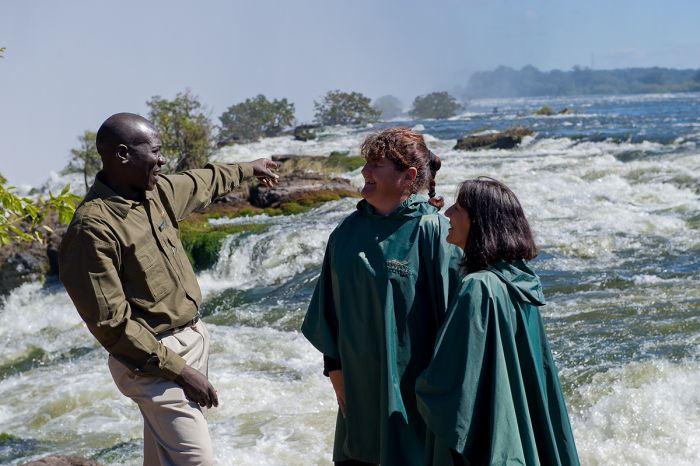
Tour of The Falls (during high water) from Toka Leya Camp.
High Water Season
Rainfall in the catchment of the upper Zambezi River (upper meaning above the Victoria Falls and all the way north into Zambia) occurs between November and April. Much of this catchment is hundreds of miles north of Livingstone, so the high water levels at The Falls are typically between February and May, with the peak months being March and April.
Note that the timing and amount of rainfall varies year to year and is never completely predictable. Beginning in May, the water flow over The Falls gradually decreases until December, when the local rainfall begins to raise the river again.
Touring The Victoria Falls at high water means that actually seeing The Falls is nearly impossible due to the tremendous amount of spray created when the torrential flow of water crashes into First Gorge below The Falls. The spray is forced upward and rises 1 300 to 2 600 feet (400-800 meters) above the lip of the waterfall and can be seen from 30 miles (48 kms) away. The incredible sound of the crashing water and the massive spray is what gave Victoria Falls its local name of 'Mosi-oa-Tunya', which means 'The Smoke that Thunders'.
The walking trail on the Zambian side of the waterfall follows a footpath right along the cliff of the gorge opposite the Eastern Cataract falls and during high water, the incessant spray means it will be very wet. The rising spray falls back as a steady but gentle rain and rain gear is highly recommended, as well as waterproof coverings for your electronic gear, including cameras and phones.
A great way top see The Falls at high water is to take a helicopter or microlight flight above!
Low Water Season
The volume of water over the Victoria Falls begins to recede beginning in April and usually reaches its lowest level during October and November. At this time, most of the main channels that flow over The Falls are just trickles of slow moving water and some sections, particularly the Eastern Cataract near the Zambian bank may even stop flowing completely.
While touring The Falls is certainly less dramatic at low water, this is also a great time to visit The Falls, as you get a true appreciation of the geology of the gorges and can actually see clearly compared to a visit during high water, when the spray obscures much of detail at The Falls.
Walking out onto the rocks above The Falls (with a guide only) is possible at this time and the popular "Devil's Pool" activity is only offered at low water (read more on the Livingstone page here).
White-water rafting below The Falls is at its best during low water, with incredible rapids, large wave action and deep troughs.
Climate
Dry Season / Winter
The dry winter season occurs from May through October and there is little to no rain at this time. Daytime temps are warm to hot, but the nights are cool and comfortable.
The local rains abate during April and May, but the landscape remains green and lush with rainwater still around in places. May temps average 80-84°F (27-29°C) with overnight temps falling to 50-54°F (10-11°C).
June and July bring dropping temps and these are the coolest months of the year, with no rainfall. Daytime temps average 77-81°F (25-27°C) and nights are chilly at 43-47°F (6-8°C). Morning activities can be chilly, so bring a fleece and a beanie.
August and September are dry and experience a warming trend. Daytime temps reach 88-93°F (31-34°C) and overnights are a comfortable 46-59°F (8-15°C).
October is very warm to hot and very dry. Daytime temps average 95-99°F (35-37°C) but can get even hotter on some days. Morning are the best time to be out, when temps are a more comfortable 62-66°F (17-19°C). Early rainfall often begins late in October, which brings a welcome relief.
Rainy Season / Summer
The rainy months are November through April. Rain often falls as afternoon thunderstorms and the days remain warm and humid. All-day rains are uncommon and most days experience some sunshine.
November brings the early rains (sometimes late October) and this is a welcome relief after the long dry winter. Daytime temps are very warm, averaging 86-90°F (30-32°C) with high humidity and the nights only drop to 66-70°F (19-21°C) . Afternoon rains are common.
December through mid-March experience the highest rainfall, with rain occurring on most days, but almost never being an all-day affair. Daytime temps average 84-88°F (29-31°C) with overnights dropping to 65-68°F (18-20°C).
April is a very nice month in terms of weather, with rainfall uncommon and moderate temps. The landscape is verdant after the long rainy season. Daytime temps average 85-86°F (29-30°C).
Wildlife Viewing
Game viewing in the wildlife section of Mosi-Oa-Tunya National Park (the northwest portion) is not heavily influenced by seasonality, other than the rains. Its small size and containment (fenced except along the river) mean that the antelopes and other general game are always there. Elephants move in and out, crossing the river between Zimbabwe and Zambia.




